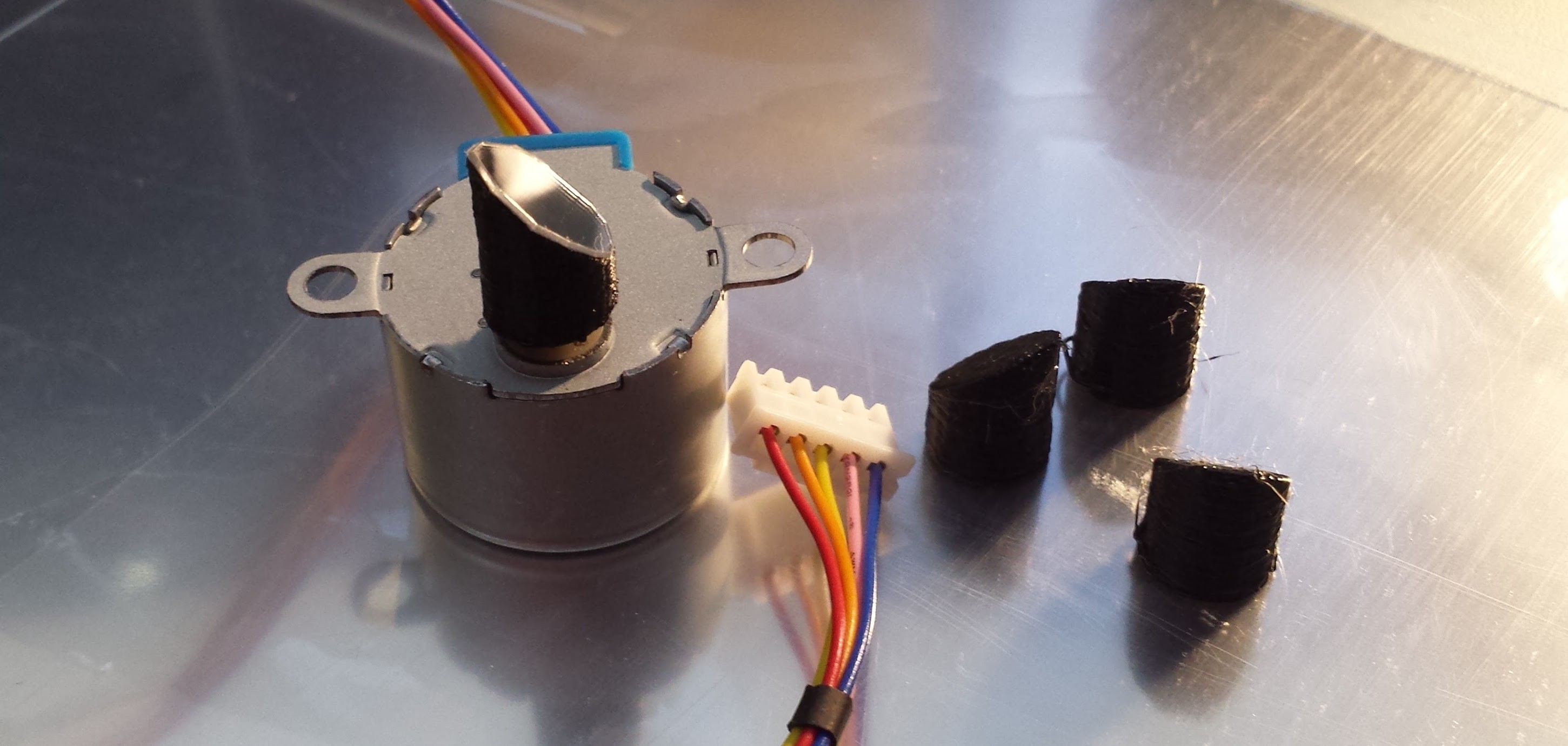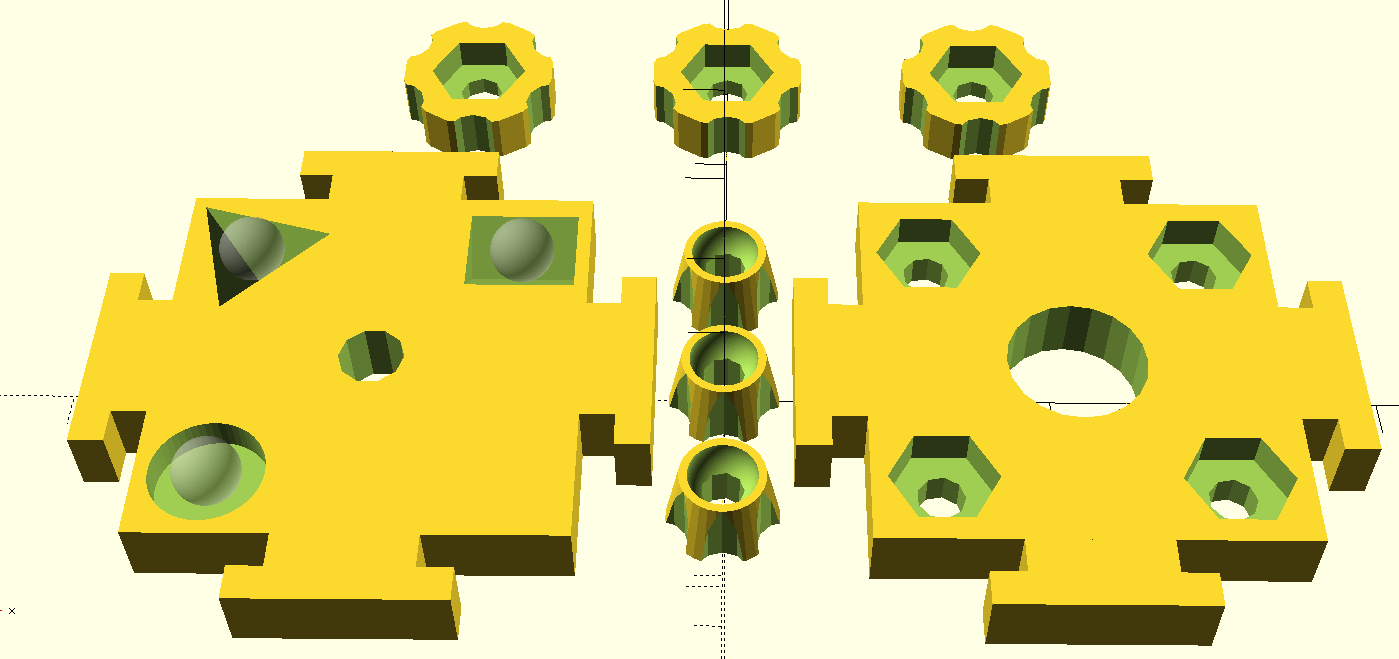
I think one of the reasons this project originally stalled was the daunting prospect of the mechanical design. Synchronizing code with precisely aligned mirrors spinning at high speeds doesn't sound easy. Of course, the way to attack such a problem is to break it into pieces, which is what I've been doing recently. I've decided for the first prototype to slow everything way down - below the flicker fusion rate - into the seconds-per-refresh region. Of course, the eye will no longer perceive the rendered image, but it can be captured in a long camera exposure. I've routinely done exposures of tens of minutes with a DLSR for astrophotography (too much stray light around here for much more), so a few seconds will be easy. The system won't be usable for a display, but I'll learn a lot about what it will take to make a real one, and prove (beyond simulation) that image formation is possible in this way.
While high-speed motors would be required for a "live" system, a slow-scan approach allows the use of cheap stepper motors to drive the mirrors. I made a low-ball offer on (40) 28BYJ-48 geared stepper motors on ebay, and it got accepted, so I'm going to go with those. I have a few of them from other projects, and I know they have their issues, especially backlash in the gear train. Of course, I'm only going to drive them in one direction at a constant speed, so I don't expect too much trouble.
I designed a simple mirror mount in OpenSCAD and printed a few that fit tightly on the motor shaft (pictured above). I was lucky enough to find some thin polycarbonate mirrored sheets on Amazon. They're self-adhesive, but it doesn't stick particularly well, and probably won't work for the real system, but it seems good enough for a slow-scan prototype. The quality of the reflection is surprisingly good - once attached, the mirror isn't exactly flat, so it distorts a laser pointer beam a little, but it's probably good enough. I cut the first rough elliptical mirror with scissors, but I may end up just making round ones with a chassis punch.
I decided to go with 36 lasers in the first prototype. Here's an early sketch of the possible layout - it's 500mm in diameter. The large size of the motors makes the ring larger than I really want, but I'm going to accept it. So far, I'm thinking of cutting a frame from medium-density fiberboard.

The last piece of the scanning mechanics is the laser mount. I'm still not sure if a simple 3D-printed interference-fit mount for the LD module will work, or if I will need to provide adjustments for aligning the laser. I have a design for a 3D-printed kinematic mount I made a while back that might be useful. It uses acorn (cap) nuts on 3D printed bearing surfaces.

In its current form, it's a bit large to incorporate into the display design, but I've printed a few of them, and they make decent precision alignment stages for laser diode modules:

I looked into using steel or glass inserts for the bearing surfaces, but I couldn't find anything suitable (and cheap). Acorn nuts on ABS or PLA seems to work OK, at least for light-duty use.
 Ted Yapo
Ted Yapo
Discussions
Become a Hackaday.io Member
Create an account to leave a comment. Already have an account? Log In.